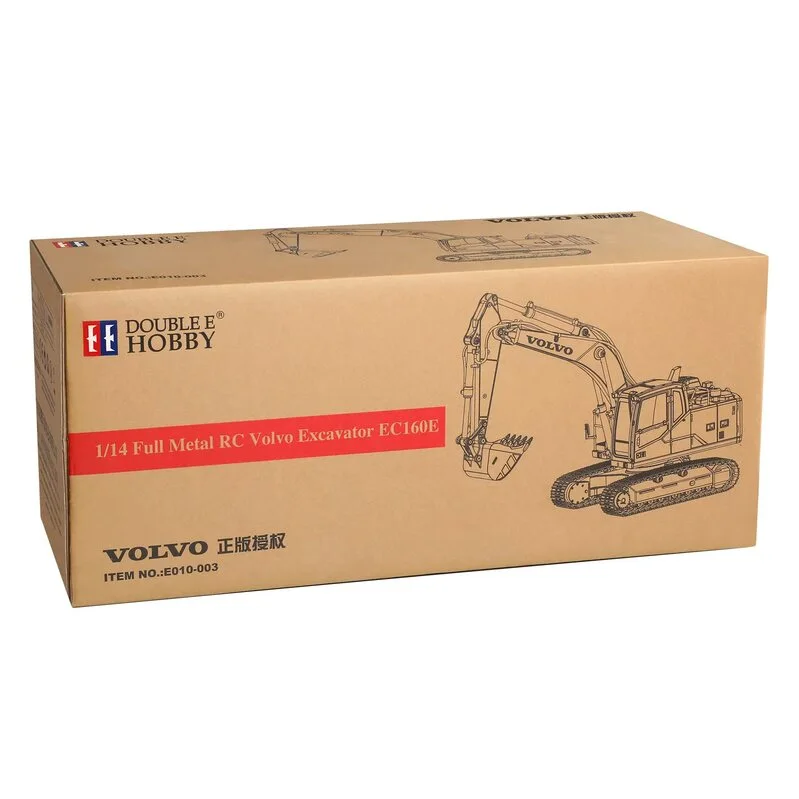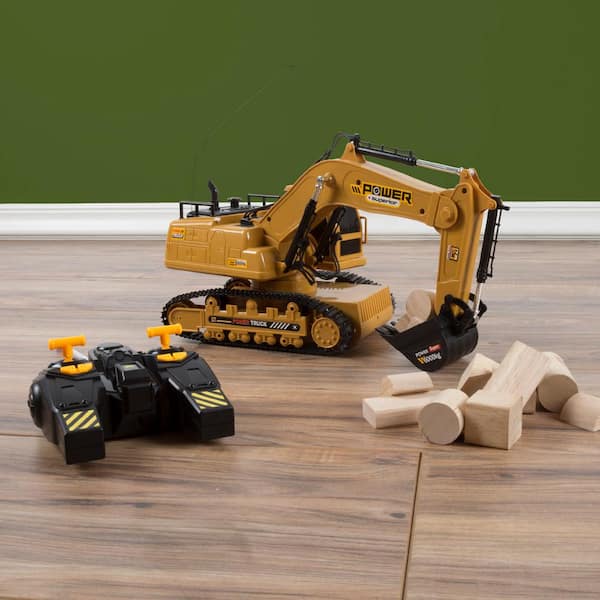The Essential Features of Excavator That Keep It a Must-Have Device
Excavators are crucial in the construction and landscape design markets. Their versatile attachments enable a series of jobs, from excavating to demolition. In addition, they flaunt premium excavating depth and reach, powered by robust engines. Operator convenience and small layouts boost use in numerous settings. Nonetheless, what truly establishes excavators apart are their sophisticated hydraulic systems and toughness. Comprehending these functions can make clear why they are thought about necessary devices on any type of job website.
Versatile Accessories for Enhanced Performance
Excavators are powerful devices on their very own, the enhancement of flexible add-ons significantly enhances their capability. These accessories change a standard excavator into a multi-purpose tool, appropriate for a selection of tasks. Pails, for instance, come in various sizes and shapes, enabling operators to dig, scoop, and move products effectively. Hydraulic thumbs can be added for improved gripping and handling of large things, such as logs or rocks.Furthermore, specialized add-ons like breakers and augers permit drilling and demolition work, expanding the excavator's energy on building sites. remote control excavator. Grapples are an additional option, perfect for arranging and moving debris. This versatility not only increases performance but also lowers the need for several devices, conserving time and prices. By equipping excavators with the right add-ons, drivers can take on varied jobs, making them vital in the building and construction market
Superior Excavating Depth and Get To
Excavators are made with superior digging deepness and reach, permitting them to steer in tight rooms and accessibility hard-to-reach locations. This capability is important for various construction and excavation tasks, where typical equipment may drop short. With flexible boom arms and extendable tracks, excavators can conveniently navigate uneven surface while keeping stability.The excavating deepness can differ significantly amongst designs, often ranging from 10 to 25 feet, depending upon the design and function. This function enables operators to dig deep into foundations, trenches, and various other deep frameworks successfully. Additionally, the reach of an excavator permits accurate excavating and product handling without rearranging the device regularly, saving time and labor costs.Ultimately, the remarkable excavating depth and reach of excavators make them vital for specialists looking for to complete complicated jobs with accuracy and performance. Their flexibility improves efficiency on task websites, showcasing them as a crucial device in modern building and construction.
Powerful Engine Performance

When it concerns effectiveness and productivity on construction websites, powerful engine performance plays a critical role in the abilities of an excavator. A robust engine generates considerable horse power, allowing the maker to take on sturdy jobs with convenience - remote control excavator. This stamina translates into faster cycle times, making it possible for operators to full tasks much more quickly.Additionally, effective engines provide the required torque to manage tough surfaces and differed tons, ensuring that the excavator can do successfully under different problems. Whether it is raising, excavating, or moving products, the engine's efficiency directly affects the overall functional performance of the machine.Furthermore, developments in engine innovation have caused improved gas effectiveness, decreasing operational prices while keeping power result. Inevitably, the engine's performance functions as the backbone of an excavator, verifying its standing as a vital device in the building industry
Advanced Hydraulic Equipments

Boosted Raising Capacity
A significant enhancement in lifting capability can be associated to sophisticated hydraulic systems located in contemporary excavators. These systems make use of high-pressure fluid to generate higher pressure, permitting operators to raise heavier tons effortlessly. The design behind these hydraulics guarantees peak efficiency, offering an excellent power-to-weight ratio that enhances total effectiveness. Therefore, excavators can deal with demanding jobs, such as raising huge materials or tools, without jeopardizing stability. Additionally, the durable style of hydraulic components adds to boosted toughness and reliability, making them suitable for numerous building and construction settings. This enhanced lifting capacity not only decreases the moment required for tasks however likewise reduces the requirement for extra equipment, proving essential for both efficiency and cost-effectiveness in the building and construction sector.
Enhanced Precision Control
Conventional excavators often battled with accuracy, modern hydraulic systems have actually transformed control mechanisms, allowing drivers to carry out jobs with amazing precision. These advanced systems utilize symmetrical control shutoffs that allow for smoother and a lot more responsive movements, substantially decreasing the margin for error. Operators can currently finely tune the excavator's movements, making it simpler to browse tight spaces and handle delicate products. Enhanced comments systems even more inform operators of real-time performance, making sure excellent sychronisation in between the machine and operator. This increased accuracy not only enhances performance but additionally boosts security on job websites, lessening the threat of mishaps. Therefore, modern excavators equipped with advanced hydraulic systems are indispensable devices for construction and excavation tasks requiring precise accuracy.
Operator Comfort and Visibility
Operator convenience and exposure are vital components in the design of modern excavators (remote control excavator). Functions such as ergonomic seat design, enhanced presence alternatives, and effective control layouts greatly boost the driver's experience and performance. Focusing on these facets guarantees that drivers can work successfully and securely in various problems
Ergonomic Seat Design
Comfort and visibility are critical in excavator design, with the ergonomic seat playing a necessary role in enhancing the operator's experience. An ergonomic seat is engineered to support the driver's body, minimizing fatigue during long hours of procedure. Adjustable functions, such as seat height, back-rest angle, and back assistance, accommodate private preferences and promote optimal stance. These adjustments improve comfort and enable the driver to preserve concentrate on tasks without discomfort. In addition, a properly designed seat can give much better lateral assistance, enabling smoother maneuvering when the excavator functions. This thoughtful layout not just increases efficiency however additionally contributes to general safety, making sure that operators can perform their tasks properly and effectively.
Boosted Visibility Functions
The layout of an excavator extends past just the seat, with improved presence features playing a substantial role in operator convenience and general safety. Large windows and tactically positioned mirrors supply operators with a clear view of Get the facts their environments, minimizing unseen areas. This layout consideration permits much better spatial awareness, which is vital in hectic job environments. In addition, several excavators include rearview video cameras and advanced monitoring systems that aid operators in steering limited rooms. The assimilation of these visibility features not only promotes safety and security however also decreases driver fatigue by making it possible for less complicated monitoring of workplace. Inevitably, boosted exposure adds to extra efficient procedures and helps guarantee that excavators can execute their jobs successfully and securely.
Control Format Effectiveness
While handling complex work sites, an effective control design significantly enhances both driver comfort and exposure. A properly designed control configuration warranties that drivers can access important functions with marginal effort, reducing tiredness during long hours. Ergonomic joystick placements and intuitive button setups enable smooth procedure, enabling drivers to maintain concentrate on the task at hand. Furthermore, clear visibility of both the work location and the control board is important for safety and precision. Modern excavators frequently integrate adjustable seats and control setups to accommodate different operator choices, better boosting convenience. Ultimately, an attentively made control layout not just enhances efficiency however likewise promotes a safer working environment by permitting drivers to respond swiftly to altering conditions.
Compact Design for Urban Environments
As urban building sites often face space restrictions, a compact style ends up being important for excavators running in these environments. These makers are crafted to browse tight internet areas, enabling for reliable ability to move in jampacked work websites. A minimized footprint enables them to work very closely to existing structures, reducing interruption and taking full advantage of productivity.The compact layout often includes shorter tracks and a tighter turning radius, assisting in operation in narrow alleys and restricted areas. Light-weight materials contribute to ease of transportation, making it simpler to move the excavator from one area to another within the metropolitan landscape.Additionally, several compact excavators are geared up with attributes such as flexible attachments and extendable arms, enhancing their capability while maintaining a tiny dimension. This adaptability enables operators to take on a range of tasks, from digging to demolition, all while fitting effortlessly right into the constraints of metropolitan settings.

Durability and Maintenance Considerations
Durability stands as a crucial factor in the efficiency and long life of excavators, specifically popular urban atmospheres. These machines are subjected to strenuous problems, consisting of differing dirt kinds, severe temperatures, and high-frequency usage. Top notch products and durable construction are needed for guaranteeing that excavators can withstand these challenges without jeopardizing functionality.Regular maintenance is equally vital in preserving resilience. Scheduled assessments, timely oil modifications, and the substitute of worn components contribute substantially to an excavator's life-span. Operators should likewise take note of hydraulic systems, tracks, and undercarriages, as these parts usually birth the impact of wear and tear.Investing in resilient excavators with comprehensive maintenance strategies enhances dependability and decreases downtime, ultimately leading to increased productivity on building and construction sites. Comprehending the interaction between longevity and maintenance is important for any person taking into consideration the procurement of an excavator for urban jobs.
Often Asked Concerns
Just How Do Excavators Compare to Other Building And Construction Tools?
Excavators stand out among construction equipment due to their flexibility, allowing tasks such as excavating, grading, and lifting. Compared to others, their hydraulic capabilities use greater performance and power, making them indispensable on various work websites.
What Safety And Security Includes Are Included in Modern Excavators?
Modern excavators include different security features, including rollover security systems, alarms, and advanced presence enhancements. These elements function with each other to reduce dangers, making sure operator safety and security while boosting efficiency on building and construction websites and other demanding atmospheres.

Can Excavators Be Utilized in Wintertime Conditions?
Excavators can undoubtedly be made use of in winter season conditions, given they are geared up with suitable winter season attachments and preventative measures are taken. Correct upkeep and changes improve their efficiency, making certain effective procedure despite difficult weather condition scenarios.
What Is the Average Life-span of an Excavator?
The typical lifespan of Home Page an excavator typically varies from 7,000 to 10,000 hours of procedure. This period can considerably depend upon upkeep practices, operating conditions, and the certain version's longevity and design features.
Just how Do I Select the Right Excavator Size for My Job?
Choosing the appropriate excavator size entails evaluating task scope, site problems, and material kinds. Consider variables like reach, deepness requirements, and weight capability to assure optimal effectiveness and safety and security during procedure. Dimension issues substantially in project success. Furthermore, the reach of an excavator permits for accurate excavating and material handling without rearranging the maker regularly, saving time and labor costs.Ultimately, the exceptional digging deepness and reach of excavators make them crucial for professionals seeking to complete complicated jobs with accuracy and performance. Comfort and visibility are vital in excavator style, with the ergonomic seat playing a necessary function in improving the operator's experience. The layout of an excavator expands past just the seat, with boosted exposure functions playing a significant role in operator comfort and total safety and security. Modern excavators typically incorporate flexible seats and control setups to suit various driver preferences, further boosting convenience. Lightweight materials contribute to alleviate of transportation, making it less complex to relocate the excavator from one location to another within the urban landscape.Additionally, many small excavators are furnished with functions such as extendable arms and versatile add-ons, improving their performance while maintaining a tiny dimension.